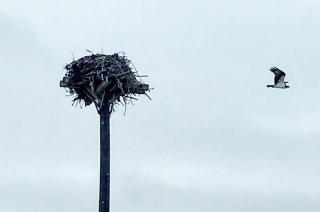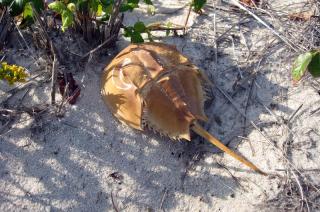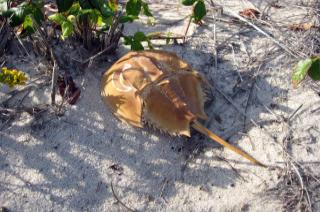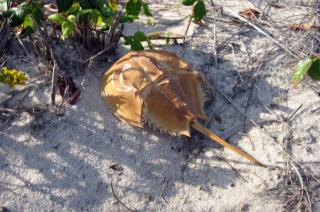Spring means osprey nesting and horseshoe crab spawning, and Felix Neck is looking for volunteers to keep an eye on the animals.
Horseshoe crabs
2017
2014
Horseshoe Crabs: A Story of Beach Trysts and Blue Bloods comes to Island libraries.
2013
Abundance is a difficult thing to judge. Changes to the abundance of a particular species are relative to our perception of its abundance when we first observe the species. Our first observations become our baseline against which we measure changes in our natural world. Is this appropriate? Consider horseshoe crabs.
At approximately 11:30 p.m. on Tuesday, June 25, the tide in Lake Tashmoo reached its highest point and began to roll back. Susie Bowman, a naturalist and teacher at Mass Audubon’s Felix Neck wildlife sanctuary, was there to mark the change with her husband, Woody. After Mrs. Bowman marked the tide’s apex, she began measuring out five-meter by five-meter quadrants in which they would search for pairs of mating horseshoe crabs. This is the couple’s fifth year of horseshoe crab surveying at Lake Tashmoo.
2010
Among all the species taken by fishermen in this part of the world, horseshoe crabs have, until now, enjoyed a dubious distinction: they were the only ones targeted while in the act of reproducing.
The easiest way for many to catch them was to walk the beaches at the times of the full and new moons in May and June and simply pick them up as they came into the shallows to spawn.
2009
By the miracle of instinct and enormous exertion, a little bird, the red knot, migrates from the Canadian low arctic to the tip of South America and back each year.
But a decade or so ago, their number dropped dramatically. And the reason for it makes for one of those scientific detective stories that illustrates the interrelatedness of things to each other, and to us.






